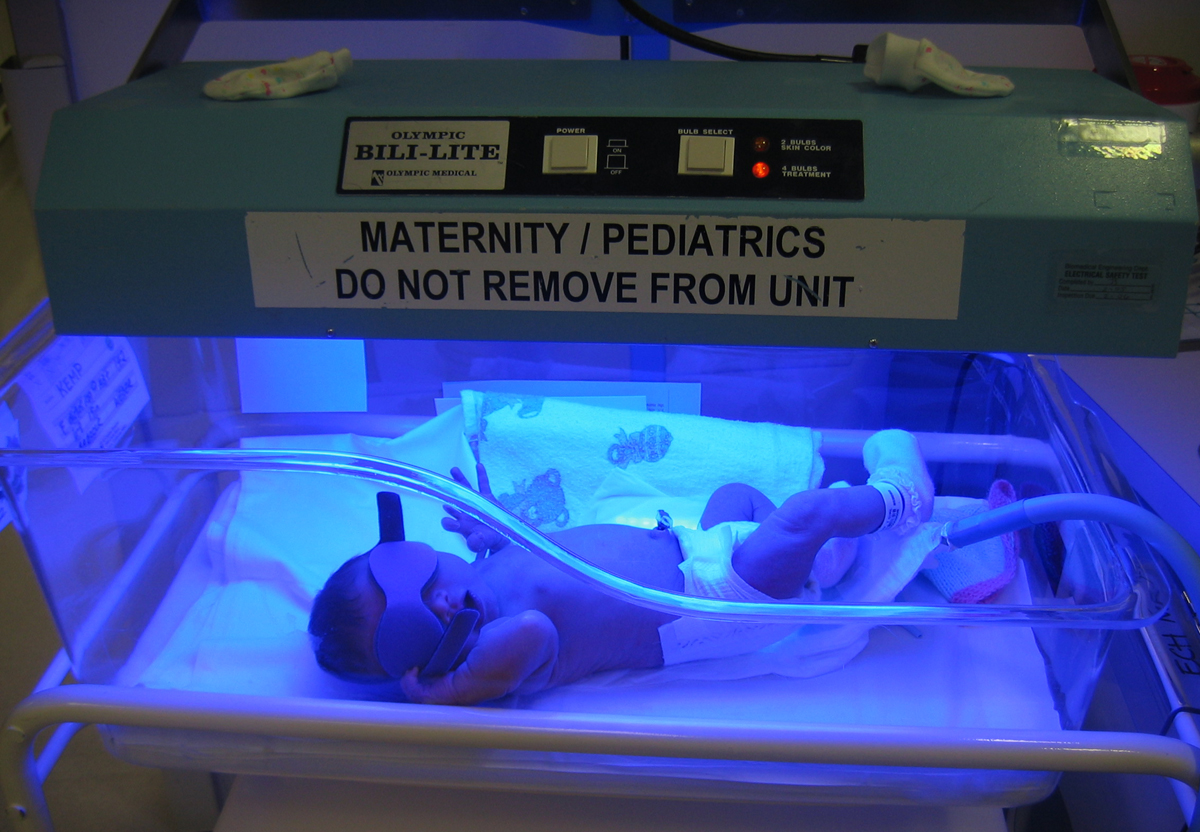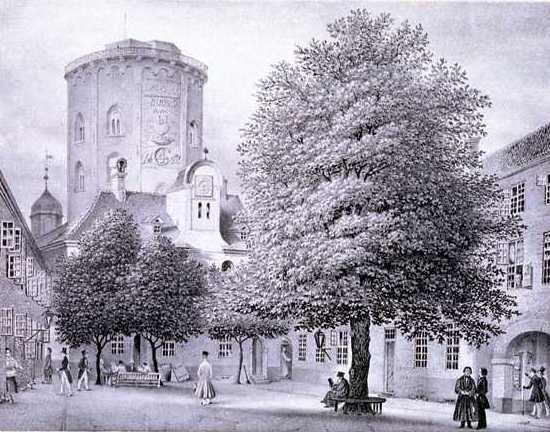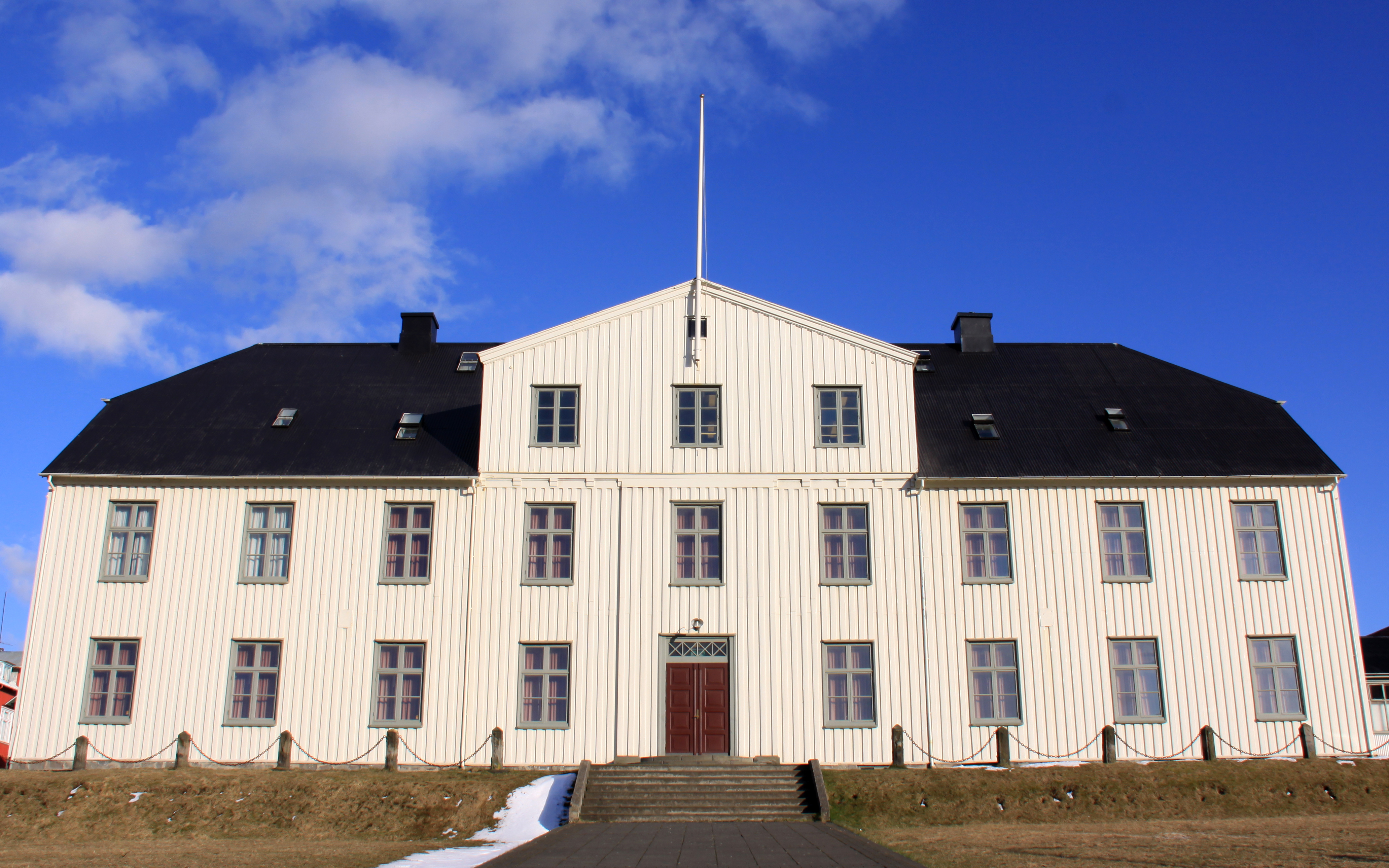|
Niels Finsen
Niels Ryberg Finsen (15 December 1860 – 24 September 1904) was a physician and scientist. In 1903, he was awarded the Nobel Prize in Medicine and Physiology "in recognition of his contribution to the treatment of diseases, especially lupus vulgaris, with concentrated light radiation, whereby he has opened a new avenue for medical science." Biography Niels Finsen was born in Tórshavn, Faroe Islands, as the second-oldest of four children. His father was , who belonged to an Icelandic family with traditions reaching back to the 10th century, and his mother was Johanne Formann from Falster, Denmark. The family moved to Tórshavn from Iceland in 1858 when his father was given the position of Landfoged. When Niels was four years old his mother died, and his father married her cousin Birgitte Kirstine Formann, with whom he had six children. In 1871 his father was made ''Amtmand'' of the Faroe Islands. His father was a member of the Faroese parliament for 12 years, and his older brot ... [...More Info...] [...Related Items...] OR: [Wikipedia] [Google] [Baidu] |
Tórshavn
Tórshavn (; ; Danish language, Danish: ''Thorshavn''), usually locally referred to as simply Havn, is the capital and largest city of the Faroe Islands. It is located in the southern part on the east coast of Streymoy. To the northwest of the city lies the mountain Húsareyn, and to the southwest, the Kirkjubøreyn. They are separated by the Sandá River. The city itself has a population of 14,038 (2024), and the greater urban area has a population of 23,160, including the suburbs of Hoyv%C3%ADk and Argir. The Norsemen, Norse (Scandinavians) established their parliament on the Tinganes peninsula in AD 850. Tórshavn thus became the capital of the Faroe Islands and has remained so ever since. Early on, Tórshavn became the centre of the islands' trade monopoly, thereby being the only legal place for the islanders to sell and buy goods. In 1856, the trade monopoly was abolished and the islands were left open to free trade. History Early history It is not known whether t ... [...More Info...] [...Related Items...] OR: [Wikipedia] [Google] [Baidu] |
Phototherapy
Light therapy, also called phototherapy or bright light therapy is the exposure to direct sunlight or artificial light at controlled wavelengths in order to treat a variety of medical disorders, including seasonal affective disorder (SAD), circadian rhythm sleep-wake disorders, cancers, neonatal jaundice, and skin wound infections. Treating skin conditions such as neurodermatitis, psoriasis, acne vulgaris, and eczema with ultraviolet light is called ultraviolet light therapy. Medical uses Nutrient deficiency Vitamin D deficiency Exposure to UV-B light at wavelengths of 290-300 nanometers enables the body to produce vitamin D3 to treat vitamin D3 deficiency. Skin conditions Light therapy treatments for the skin usually involve exposure to ultraviolet light. The exposures can be to a small area of the skin or over the whole body surface, as in a tanning bed. The most common treatment is with narrowband UVB, which has a wavelength of approximately 311–313 nan ... [...More Info...] [...Related Items...] OR: [Wikipedia] [Google] [Baidu] |
Niemann–Pick Disease
Niemann–Pick disease (NP), also known as acid sphingomyelinase deficiency, is a group of rare genetic diseases of varying severity. These are inherited metabolic disorders in which sphingomyelin accumulates in lysosomes in cells of many organs. NP types A, A/B, and B are caused by mutations in the '' SMPD1'' gene, which causes a deficiency of an acid sphingomyelinase (ASM). NP type C is now considered a separate disease, as ''SMPD1'' is not involved, and there is no deficiency in ASM. These disorders involve the dysfunctional metabolism of sphingolipids, which are fats found in cell membranes. They can be considered as a kind of sphingolipidosis, which is included in the larger family of lysosomal storage diseases. Signs and symptoms Symptoms are related to the organs in which sphingomyelin accumulates. Enlargement of the liver and spleen ( hepatosplenomegaly) may cause reduced appetite, abdominal distension, and pain. Enlargement of the spleen (splenomegaly) may also ca ... [...More Info...] [...Related Items...] OR: [Wikipedia] [Google] [Baidu] |
Proteolysis
Proteolysis is the breakdown of proteins into smaller polypeptides or amino acids. Protein degradation is a major regulatory mechanism of gene expression and contributes substantially to shaping mammalian proteomes. Uncatalysed, the hydrolysis of peptide bonds is extremely slow, taking hundreds of years. Proteolysis is typically catalysed by cellular enzymes called proteases, but may also occur by intra-molecular digestion. Proteolysis in organisms serves many purposes; for example, digestive enzymes break down proteins in food to provide amino acids for the organism, while proteolytic processing of a polypeptide chain after its synthesis may be necessary for the production of an active protein. It is also important in the regulation of some physiological and cellular processes including apoptosis, as well as preventing the accumulation of unwanted or misfolded proteins in cells. Consequently, abnormality in the regulation of proteolysis can cause diseases. Proteolysis can also ... [...More Info...] [...Related Items...] OR: [Wikipedia] [Google] [Baidu] |
Rigshospitalet
Rigshospitalet (meaning ''the National'', ''State'', ''Kingdom'' or ''Hospital of the Realm'', but not usually translated) is the largest public and teaching hospital in Copenhagen and the most highly specialised hospital in Denmark. The hospital's main building is a 16-storey functionalist highrise, one of the tallest structures in the central parts of the city. Rigshospitalet neighbours the Panum Building which houses the Faculty of Health and Medical Sciences at the University of Copenhagen. As a teaching hospital it is part of the framework organisation Copenhagen University Hospital. Name The Danish name is not usually translated to English. The prefix ''Rigs-'' is used in the names of some Danish state institutions, especially in a solemn or prestigious context or for authorities serving for the whole Danish Realm including Greenland and the Faroe Islands. It is the genitive of ''rige'' ('realm, kingdom, empire') and the cognate word is used similarly in Norwegian, Swed ... [...More Info...] [...Related Items...] OR: [Wikipedia] [Google] [Baidu] |
Order Of The Dannebrog
The Order of the Dannebrog () is a Denmark, Danish order of chivalry instituted in 1671 by Christian V of Denmark, Christian V. Until 1808, membership in the Order was limited to fifty members of noble or royal rank, who formed a single class known as ''White Knights'' to distinguish them from the ''Blue Knights'' who were members of the Order of the Elephant. In 1808, the Order was reformed and divided into four classes. The statute of the Order was amended in 1951 by a Royal Ordinance so that both men and women could be members of the Order. Today, the Order of the Dannebrog is a means of honouring and rewarding the faithful servants of the modern Danish state for meritorious civil or military service, for a particular contribution to the arts, sciences or business life, or for working for Danish interests. Insignia The ''badge'' of the Order is a white enamelled Flag of Denmark, Dannebrog cross (i.e., a cross pattée, the lower arm being longer than the others) with a red ... [...More Info...] [...Related Items...] OR: [Wikipedia] [Google] [Baidu] |
Professorship
Professor (commonly abbreviated as Prof.) is an academic rank at universities and other post-secondary education and research institutions in most countries. Literally, ''professor'' derives from Latin as a 'person who professes'. Professors are usually experts in their field and teachers of the highest rank. In most systems of academic ranks, "professor" as an unqualified title refers only to the most senior academic position, sometimes informally known as "full professor". In some countries and institutions, the word ''professor'' is also used in titles of lower ranks such as associate professor and assistant professor; this is particularly the case in the United States, where the unqualified word is also used colloquially to refer to associate and assistant professors as well, and often to instructors or lecturers. Professors often conduct original research and commonly teach undergraduate, postgraduate, or professional courses in their fields of expertise. In universitie ... [...More Info...] [...Related Items...] OR: [Wikipedia] [Google] [Baidu] |
Anatomy
Anatomy () is the branch of morphology concerned with the study of the internal structure of organisms and their parts. Anatomy is a branch of natural science that deals with the structural organization of living things. It is an old science, having its beginnings in prehistoric times. Anatomy is inherently tied to developmental biology, embryology, comparative anatomy, evolutionary biology, and phylogeny, as these are the processes by which anatomy is generated, both over immediate and long-term timescales. Anatomy and physiology, which study the structure and function of organisms and their parts respectively, make a natural pair of related disciplines, and are often studied together. Human anatomy is one of the essential basic sciences that are applied in medicine, and is often studied alongside physiology. Anatomy is a complex and dynamic field that is constantly evolving as discoveries are made. In recent years, there has been a significant increase in the use of ... [...More Info...] [...Related Items...] OR: [Wikipedia] [Google] [Baidu] |
Prosector
A prosector is a person with the special task of preparing a dissection for demonstration, usually in medical schools or hospitals. Many important anatomists began their careers as prosectors working for lecturers and demonstrators in anatomy and pathology. The act of prosecting differs from that of dissecting. A prosection is a professionally prepared dissection prepared by a prosector – a person who is well versed in anatomy and who therefore prepares a specimen so that others may study and learn anatomy from it. A dissection is prepared by a student who is dissecting the specimen for the purpose of learning more about the anatomical structures pertaining to that specimen. The term dissection may also be used to describe the act of cutting. Therefore, a prosector dissects to prepare a prosection. Prosecting is intricate work where numerous tools are used to produce a desired specimen. Scalpels and scissors allow for sharp dissection where tissue is cut, e.g. the biceps brachi ... [...More Info...] [...Related Items...] OR: [Wikipedia] [Google] [Baidu] |
Regensen
Regensen (original Latin name: ''Collegium Domus Regiæ'', English: ''The College of the Royal House'') is a residential college for students at the University of Copenhagen and Technical University of Denmark (DTU). It is situated in the heart of the old city, right next to the Rundetårn (the Round Tower). History Commissioned by King Christian IV and inaugurated by Royal Charter by on 1 July 1623, Regensen has for centuries provided a unique living and working environment for 100 students. Some of the buildings burned down along with the rest city in the Great Fire of Copenhagen in 1728, but was rebuilt the same year. Regensen's mission is to provide housing to talented yet non-privileged students at the University of Copenhagen (KU) and the Technical University of Denmark (DTU). Until the 1980s, the foundation behind Regensen, Kommunitetet, provided free housing and a scholarship for students chosen for admission. Because of financial difficulties, a small fee was introdu ... [...More Info...] [...Related Items...] OR: [Wikipedia] [Google] [Baidu] |
Menntaskólinn í Reykjavík
Menntaskólinn í Reykjavík (MR; official name in English: Reykjavik College) is collegein Iceland. It is located in Reykjavík. The school traces its origin to 1056, when a school was established in Skálholt, and it remains one of the oldest institutions in Iceland. The school was moved to Reykjavík in 1786, but poor housing conditions forced it to move again in 1805 to Bessastaðir near Reykjavík. In 1846 the school was moved to its current location, and a new building was erected for it in Reykjavík. This was the largest building in the country at the time and can be seen on the 500 Icelandic krona bill. It was used initially when Althing began to meet again in Reykjavík after a few years hiatus and thus it is in this building where Icelandic independence leader Jón Sigurðsson led the MPs in their famous phrase, '' Vér mótmælum allir''. The school has previously been known as ''Lærði skólinn'' (The Learned School), ''Latínuskólinn'' (The Latin School) and by t ... [...More Info...] [...Related Items...] OR: [Wikipedia] [Google] [Baidu] |






